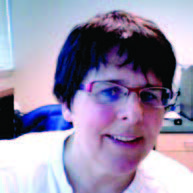 In the spirit of inclusion, our rainbow alphabet acronym is LGBTQI, and mostly we are clear what these letters mean. After reading my first article in the Bay Times, David Cameron Strachan, a well-known local intersex activist, wrote to express thanks that I remembered to include the “I” but noted that I was not consistent, sometimes writing LGBTQI and sometimes LGBT. It wasn’t purposeful. I was being a lazy typist, and David was right to point out the admission. I promised to write an article on intersex health issues.
In the spirit of inclusion, our rainbow alphabet acronym is LGBTQI, and mostly we are clear what these letters mean. After reading my first article in the Bay Times, David Cameron Strachan, a well-known local intersex activist, wrote to express thanks that I remembered to include the “I” but noted that I was not consistent, sometimes writing LGBTQI and sometimes LGBT. It wasn’t purposeful. I was being a lazy typist, and David was right to point out the admission. I promised to write an article on intersex health issues.
Fortuitously there was a wonderful movie at the Roxie last week, Intersexion. It explored many important issues shared by intersex people, including the secrecy and shame that many are taught from birth, the invasive and frequently poor outcomes of gender “correcting” surgeries often begun in infancy, as well as the difficulties of living in a gender binary system (aka male versus female). All who were profiled shared stories of isolation, secrecy and shame. Those who were surgically altered described ongoing physical trauma and PTSD.
The official medical term for intersex is Disorders of Sex Development (DSD), hardly politically correct terminology. Abnormalities during fetal development may result in genitalia that do not “match” the baby’s chromosomes, or genitalia that cannot be determined to be male or female. There are also unusual chromosomal patterns that may not be apparent until the age where puberty usually begins. The incidence of intersex births is estimated at 1 in 4,500, 1 in 2000, or 1 in 1000, depending on definition. There are more than 15 recognized intersex conditions.
Intersex organizations advocate assigning a gender without surgical interventions until the child can give informed consent. Surgical gender reassignment, or “corrective surgery” based on the appearance of the external genitalia at birth, is falling out of favor. Most medical literature recognizes the ethical concerns of this approach, but the “corrective” surgeries are still being done. Advocacy groups claim that no one has come forth stating that he or she “really appreciates what my doctor did to me when I was a kid,” yet a literature review shows that approximately 50% are pleased with the outcome and/or assigned gender. However, high rates of dissatisfaction with sexual function are reported, especially in women who underwent clitoral amputation.
It is clear that many surgically altered intersex people have ongoing physical and psychological trauma. People who have been surgically altered do not trust their doctors; many are afraid to see any health care provider. Hormonal therapy also comes with mixed results. Each particular syndrome may have accompanying health care problems.
I asked David what we could do better as a community. David pointed out that we “lump everyone together as ‘gay,’ but only the LGB is about sexual orientation. ‘T’ is about gender identity, and the ‘I’ is about differences of sexual anatomy that don’t fit the stereotypical male or female and have nothing to do with sexual orientation.”
Many intersex, as well as transgender, individuals are not gay-identified. Further, the LGBTQ community, despite its openness, is also based on a gender binary system. We don’t have problems with people self-identifying to whatever gender they choose, but that still ignores the reality of those who are neither male nor female. Imagine filling out a driver’s application, or applying for insurance or a job when you are neither. Intersex does not legally exist in those and countless other instances. We therefore need greater recognition of intersex individuals and to do more to include them in our diverse community.
For additional information, please look up Advocates for Informed Choice (www.aiclegal.org), or the Accord Alliance, which has a handbook for providers and parents (www.accordalliance.org). Many thanks again to David Cameron Strachan for agreeing to be interviewed and enlightening me on the realities of the intersex community.
Dr. Naomi Jay is a nurse practitioner in the department of Infectious Disease at UCSF.
Recent Comments